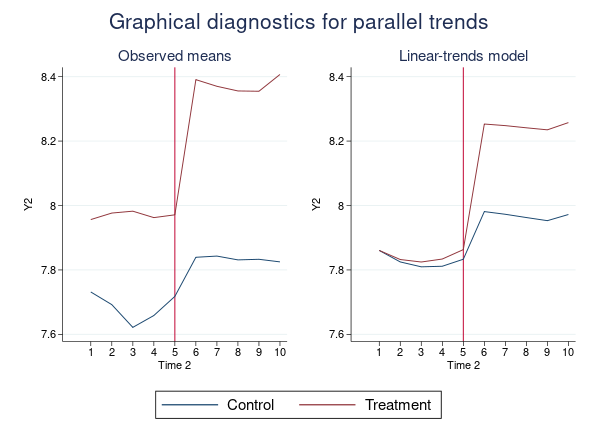Difference-in-differences (DID) and DDD models
New estimation commands didregress and xtdidregress fit difference-in-differences (DID) and difference-in-difference-in-differences or triple-differences (DDD) models with repeated-measures data. didregress works with repeated-cross-sectional data, and xtdidregress works with longitudinal/panel data.
DID and DDD models are used to estimate the average treatment effect on the treated (ATET) with repeated-measures data. A treatment effect can be an effect of a drug regimen on blood pressure or an effect of a training program on employment. Unlike with the standard cross-sectional analysis, available with the existing teffects command, DID analysis controls for group and time effects when estimating the ATET, where groups identify repeated measures. DDD analysis controls for additional group effects and their interactions with time—you can specify up to three group variables or two group variables and a time variable.
